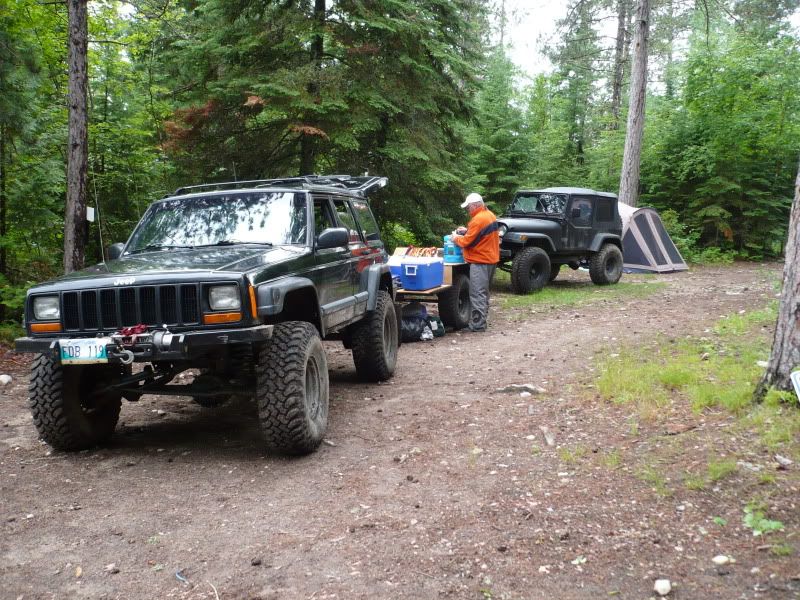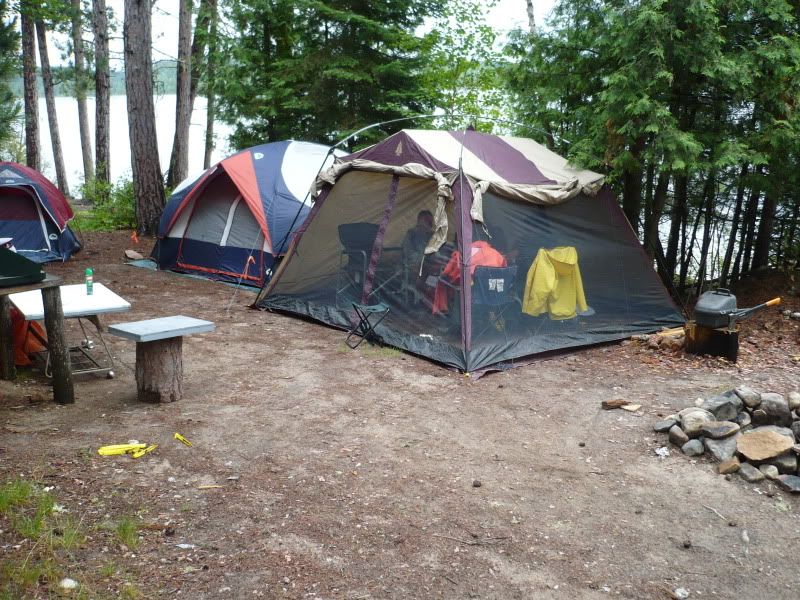This is becoming a good discussion.
Nonimouse brings up some very good points, luckily for me not much of it applies in Canada. I don't claim to be a legal expert, so this is just my observation. We tend to have more of a "no-harm, no-foul" system, largely due to the amount of unused land we have, I think. If you're not on a private person's land, or even if you are, if the plaintiff couldn't justify a claim for damages, you'd never get it through the system. Tearing up somebody's front lawn or a wilderness preserve is one thing. Tearing up a small portion of a huge plot of unused land just doesn't carry the same weight. In fact, it seems to me we put the onus on the government or land owner to fence and/or erect signs to prevent use of the land.
I'm not saying I agree with any of this, it's just the way it seems to be. It's a completely different perspective here. Evidenced by our antiquated mining laws. Any person can buy a Prospecting Licence for$25, no test or anything required, and that absolves you from anybody suing you for tresspassing. The way the law stands now, a prosepctor can hop a fence and start digging holes in somebodies yard, and there's nothing the land owner can do to stop it.
The only time we have problems with trails getting closed, is more because of user group disagreements than anything. If you're away from civilization, nobody cares much. If you're closer to civilization, you'll have hikers, naturalists or horseback riders trying to get the trail closed.
That does look pretty darned nasty. Too bad. It will take a while for that area to recover. For a long term solution, you need to find a way to allow that water to drain as it fills.
That would be hard. This is getting into classic Canadian Shield topography. There's usually non-porous rock sitting several inches to several feet under the soil. It's quite irregular, with pockets like this one. This was the low point to which an area would drain. There is nowhere else for the water to go. This mud-hole probably happened because the road was drawn on a map, then cut, rather than being built around the holes and then put on a map. The logical solution is in fact to make the bypass into the new road, which is on higher ground.
Some of the water which collects in the area could be diverted somewhere else, but it would be an extensive system.
As for the bypass and the tree blocking it, do you mean a fallen tree (can't see one) or one growing in the way? If it's growing in the way, then I suspect that's not supposed to be a bypass.
No, you can't see the tree at all. The trucks you see parked were on part of the bypass, but not the tricky part of it. Those trucks did not cross either the mud hole, or the bypass, they turned around and went back.
As for winching to get out, I'm no fan of it when you can get out on your own power but if it's at the expense of damaging the rig (not just small dings) or the surroundings, then I'm all for winching or using a snatch strap.
I agree, I prefer to drive out, obviously. But in this case, the only way through the mud, as exemplified by the Defenders that went through, was to charge through with some momentum, tires spinning, etc. Potentially damaging the truck, and definitely damaging the trail.
Maintaining a bypass for something like that is as important as maintaining the trail. Making a mud pit bigger is asking for trouble with those environmentalist who want the trail closed.
That's how I see it. The logical solution in this case seemed to be to make the bypass difficulty similar to that of the rest of the road.
That mudhole looks like a mess and may never revegetate.
I disagree with that. If left alone for 5-10 years, a blink of an eye in ecological terms, most people would hardly even notice it was ever damaged. These areas regrow very fast. I should take some before and after pictures of logging roads up here, it's pretty incredible.
Now, that's not to say that some rare species weren't destroyed or something. But just that, it will revegetate, absolutely.
Not that this would satisfy the sorts of trash that likes to bomb through mud pits, obviously, but so what? Let them go find a muddy field or something to play in.
That is the problem, I think. There's no way anything I could do would stop the masses of people who enjoy this sort of thing. None of the ATV's we saw seemed to be part of any group. Just a bunch of guys (and gal's). In fact I did say that after witnessing two new ATVers show up, and repeatedly charge through the mud, back and forth until they were stuck, that we should leave them there to suffer... well, nobody else in my group went with that idea, and we rescued them. I seem to be a lone voice on this stuff.
If a tree is not removed the lazy will attempt to drive around it and widen the trail even more. Not good.
Absolutely! That's what I see here. Either people attempt to drive over it, digging the soil more, or they drive around, tearing up more land. I seem to be in the minority carrying and axe, and even more so in knowing how to use it. I can usually cut a 12" log in less time than it takes to get a chainsaw prepped and fired up. But I have though about carrying a chainsaw, just not yet due to logistics of it. Whenever I break out the axe, people complain about the time or effort, but I find it's always easier than the alternatives.
Agreed. If possible a local club should adopt this trail and maintain it including repairing this section accordingly.
A good thought, but it seems to be hopeless up here. We have no chance against the masses who are not part of any organization. Perhaps it is that sentiment that prevents us from forming a powerful group like the Ontario Federation of Snowmobile Clubs. That's a powerful group that actually had an Act of Parliament passes which gives them quasi-government powers, and legally defines the rights of snowmobilers. They charge fees for the use of trail systems that they set up on public and private land, and have the right to charge tresspassing and damages to anybody using the trail without a permit, or damaging the trail (such as driving a truck on a groomed snowmobile trail). I am a member of the Ontario Federation of Trail Riders (motorbikes) and Ontario Federation of 4WD, and neither of them have much of a voice, and certainly can't control what goes on on public land.
It sounds to me like the ATV and Series drivers are idiots. You can tell the best drivers easily - they're the ones with no damage and little mud on their vehicles; any idiot can thrash around at full throttle and spray mud everywhere while wrecking their vehicle and, worse, the terrain.
This is a huge part of my reason for posting this thread. It seems to be that the majority of off-roaders in North America see this the opposite way. Kudos are earned for finding the hardest obstacle you can, and blasting through it. Damage is looked at as a badge of honor. Those same pictures where people here are saying "Oooh, that's a bad mud pit" were met with ridicule elsewhere.



